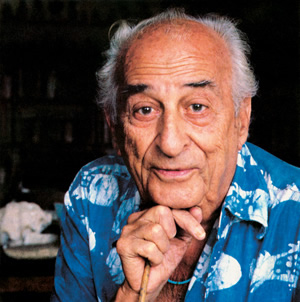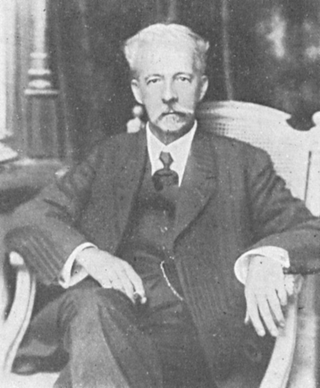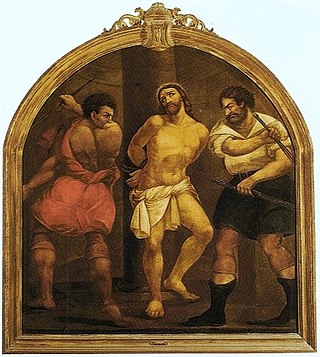
Bahia is one of the 26 states of Brazil, located in the Northeast Region of the country. It is the fourth-largest Brazilian state by population and the 5th-largest by area. Bahia's capital is the city of Salvador, on a spit of land separating the Bay of All Saints from the Atlantic. Once a monarchial stronghold dominated by agricultural, slaving, and ranching interests, Bahia is now a predominantly working-class industrial and agricultural state. The state is home to 7% of the Brazilian population and produces 4.2% of the country's GDP.

Axé is a popular music genre originated in Salvador, Bahia, Brazil in the 1980s, fusing different Afro-Caribbean genres, such as marcha, reggae, and calypso. It also includes influences of Brazilian music such as frevo, forró and carixada. The word Axé comes from the Yoruba term àṣẹ, meaning “soul, light, spirit or good vibrations”. Axé is also present in the Candomblé religion, as “the imagined spiritual power and energy bestowed upon practitioners by the pantheon of orixás”. Not only is axé present in the Candomblé religion, but it also has ties with the Roman Catholic Church and the Lenten season, which represents the roots of how carnival came to be.
Vicente Ferreira Pastinha was a mestre of the Brazilian martial art Capoeira.

Salvador is a Brazilian municipality and capital city of the state of Bahia. Situated in the Zona da Mata in the Northeast Region of Brazil, Salvador is recognized throughout the country and internationally for its cuisine, music and architecture. The African influence in many cultural aspects of the city makes it a center of Afro-Brazilian culture. As the first capital of Colonial Brazil, the city is one of the oldest in the Americas and one of the first planned cities in the world, having been established during the Renaissance period. Its foundation in 1549 by Tomé de Sousa took place on account of the implementation of the General Government of Brazil by the Portuguese Empire.

Àkàrà (Yoruba)(English: Bean cake Hausa: kosai, Portuguese: Acarajé is a type of fritter made from cowpeas or beans from Yorubaland in Nigeria, Togo and Benin. It is found throughout West African, Caribbean, and Brazilian cuisines. The dish is traditionally encountered in Brazil's northeastern state of Bahia, especially in the city of Salvador. Acarajé serves as both a religious offering to the gods in the Candomblé religion and as street food. The dish was brought by enslaved peoples from West Africa, and can still be found in various forms in Nigeria, Ghana, Togo, Benin, Mali, Gambia, Burkina Faso and Sierra Leone.
The Malê revolt was a Muslim slave rebellion that broke out during the regency period in the Empire of Brazil. On a Sunday during Ramadan in January 1835, in the city of Salvador da Bahia, a group of enslaved African Muslims and freedmen, inspired by Muslim teachers, rose up against the government. Muslims were called malê in Bahia at this time, from Yoruba imale that designated a Yoruba Muslim.

Bahian Carnival is the annual carnival festival celebrated in the Brazilian state of Bahia, mainly in its capital, Salvador. Carnaval is right around the corner in this energetic city, where traditions — culinary, musical, literary and more — reflect a deep Afro-Brazilian heritage. More than anywhere else in this multiethnic country, Salvador is steeped in Afro-Brazilian culture — from the worship of Yoruba deities (orixás), to the acrobatic practice of capoeira, to a cuisine tinge. The event lasts officially for six full days: it starts on a Thursday, then follows the usual five days of carnival. The term may also be used to comprise related events that happen immediately before or after the carnival in Bahia. Therefore, extending the duration for up to twelve days.

Héctor Julio Páride Bernabó was an Argentine-Brazilian artist, researcher, writer, historian and journalist. His nickname and artistic name, Carybé, a type of piranha, comes from his time in the scouts. He died of heart failure after the meeting of a candomblé community's lay board of directors, the Cruz Santa Opô Afonjá Society, of which he was a member.

Ilê Aiyê is a carnival block from Salvador, Bahia, Brazil. It is located in the Curuzu/Liberdade neighborhood, the largest afro-descendent population area of Salvador. The name stems from the Yoruba language: Ilé - home; Ayé - life; which can be loosely translated as 'earth'. It was founded in 1974 by Antônio Carlos “Vovô” and Apolônio de Jesus, making it the oldest Afro-Brazilian block.
Periperi is a subdistrict north of Salvador, in the Brazilian State of Bahia.

The Historic Center (US) or Centre of Salvador de Bahia in Brazil, also known as the Pelourinho or Pelo, is a historic neighborhood in western Salvador, Bahia. It was the city's center during the Portuguese colonial period and was named for the whipping post in its central plaza where enslaved people from Africa were publicly beaten as punishment for alleged infractions. The Historic Center is extremely rich in historical monuments dating from the 17th through the 19th centuries.

Teodoro Fernandes Sampaio was an Afro-Brazilian polymath and public intellectual who worked as an engineer, geographer, politician, and historian.

São Francisco do Conde is a municipality in the state of Bahia in the North-East region of Brazil. São Francisco do Conde covers 262.856 km2 (101.489 sq mi), and has a population of 40,245 with a population density of 150 inhabitants per square kilometer. It is located 67 kilometres (42 mi) from the state capital of Salvador. According to the Brazilian Institute of Geography and Statistics São Francisco do Conde has the highest concentration of Brazilians of African descent (90%) in Bahia.
Yeda Pessoa de Castro is a Brazilian ethnolinguist. With a PhD in African Languages at the National University of Zaire, she is a Technical Consultant in African Languages for the Museu da Língua Portuguesa at the Estação da Luz in São Paulo, a Member of the Academia de Letras da Bahia and of the ANPOLL's GT de Literatura Oral e Popular. Also is a Permanent Member of the Brazilian Scientific Committee of the Project "Slave Route" by UNESCO.

Manuel Lopes Rodrigues was a Brazilian Realist painter. Born in the city of Salvador, in the State of Bahia, he was initially homeschooled by his father, João Francisco Lopes Rodrigues, later entering at the Liceu de Artes e Ofícios, being taught by Miguel Navarro Cañizares.

Museu Afro Brasil is a history, artistic and ethnographic museum dedicated to the research, preservation, and exhibition of objects and works related to the cultural sphere of black people in Brazil. It is a public institution held by the Secretariat for Culture of the São Paulo State and managed by the Museu Afro Brasil Association. The museum is located in Ibirapuera Park, a major urban park in São Paulo. The Manoel da Nóbrega Pavilion, designed by Oscar Niemeyer in 1959, houses the Museum. It holds around 6 thousands items and pieces including paintings, sculptures, photos, documents, and archives created between the 15th Century and the present day. The aggregation of pieces includes many works of the African and Afro-Brazilian cultural spheres, ranging from subjects and topics such as religion, labor, and art to the African Diaspora and slavery, whilst registering and affirming the historical trajectory and the African influences in the construction of the Brazilian society. The Museum also offers a diverse range of cultural and didactic activities, temporary expositions, and contains a theater and a specialized library.

The Church of the Third Order of Mount Carmel is an 18th-century Roman Catholic church in Salvador, Bahia, Brazil. It is located adjacent to the Church and Convent of Our Lady of Mount Carmel. Work on the church began in 1644. It was destroyed by fire in 1788 and subsequently rebuilt. The church is a large complex consisting of a nave, chancel, choir, corridors, tribunes, meeting rooms, and a sacristy. The interior was richly decorated in the 18th century; the painting of the ceiling of the nave is the first major work by José Teófilo de Jesus. The Church of the Third Order of Mount Carmel was listed as a historic structure by National Institute of Historic and Artistic Heritage (IPHAN) in 1938 and is part of the Historic Center of Salvador UNESCO World Heritage Site.

The Palace of Saldanha, is former residence in Salvador, Bahia, Brazil. It is located in the Historic Center of Salvador and was constructed in the early 18th century. The residence has two stories with an attic and is typical of colonial architecture of the period: the ground floor housed slaves and servants; the second floor was reserved for the family of the owner. The façade has a monumental portal with ornate carved stone with solomonic columns with floral motifs and atlantes. Germain Bazin and others attribute the portal to Gabriel Ribeiro, designer of the ornate carved stone façade of the Church of the Third Order of Saint Francis, which it resembles. Ana Maria Lacerda calls the Palace of Saldanha an "icon of colonial architecture."

José Rodrigues Nunes was a Brazilian artist who worked primarily in Salvador, Bahia. He was primarily a painter, but also worked in the fields of decoration, restoration, and set design. He was a student of Franco Velasco (1780-1833) and is the final painter of the Bahian School of Painting. Nunes taught drawing at Liceu Provincial de Salvador between 1837 and 1859. His students included Olímpio Pereira da Mata, Macário José da Rocha, João Francisco Lopes Rodrigues (1825-1893), Francisco da Silva Romão, and his son, Francisco Rodrigues Nunes. In addition to being a teacher, he worked as a scenographer at the São José Theater for many years. He is considered one of the representatives of the final phase of Bahian colonial painting. A series of paintings by Nunes is part of the personal collection of the Bahian physician Jonathan Abbot (1796-1868). He also produced portraits of Bahian religious figures and politicians.

José Joaquim da Rocha was a Brazilian painter, engraver, gilder and restorer. His entire production was in the field of religious art, with the Catholic Church as his exclusive patron. He left numerous works of a scholarly character, moving away from the popular tradition that was common during the colonial period. Although his work has many moments of high level, it is uneven, partly because, since he became recognized, he always had many disciples and apprentices to assist him, to whom he delivered large portions of the work, and partly because of the use, as inspiration, of a varied iconography in engraving of irregular quality. Both practices were, however, common at the time.
















